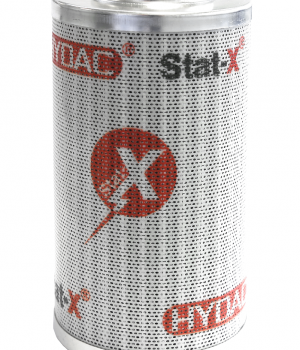Electrostatic Discharge
We recently shared an article with you on the harmful impact varnish can have on your hydraulic systems.
Here, Sam Keating, Laboratory Manager, Fluid Care Division, Hydac Technology Ltd. looks at electrostatic discharge (ESD), which occurs when the oil and filter become electrostatically charged.
ESD occurs due to a transfer of electrons between the materials; the reason for this transfer can be observed in the triboelectric series, identifying the electron affinity of the filter media and of oil.
Filter media is typically glass-fibre, which will prefer to donate electrons and become positively charged, whereas oil will be more willing to receive electrons and become negatively charged. As these materials become separated, there is an increased voltage; once this exceeds 3kV/mm, discharge sparking can occur.
As well as contributing to varnish formation, these sparks can cause the following problems:
- Holes can be burnt into the filtration layers, this can effectively turn your 3µm filter into a 200µm filter.
- Spark Migration – this is often considered as a possible solution to combat ESD by making the filter conductive, but only serves to prevent the sparking from occurring at the filter. The charge continues to build up and can then discharge in more safety critical areas, such as the tank, where there is a risk of igniting the oil mist vapour and causing a fire/explosion.
High conductivity oils, typically greater than 500pS/m, are less prone to ESD due to having more electron flow pathways; these oils tend to be the outdated Group 1 Base Oils, being more conductive due to the presence of heavy earth metals, such as zinc. Low conductivity oils, typically less than 500pS/m, are more susceptible to ESD; these are usually the more heavily refined Group 2 & 3 Base Oils.
As a result of this, measuring the conductivity of the oil is the initial parameter when identifying any risk of ESD. Additional risk indicators include:
- Workload at Filter – if the low conductivity accompanies a workload at the filter greater than 0.1L⋅min-1cm-2, the chance of sparking greatly increases.
- Cold Conditions – conductivity positively correlates with temperature, so it may be that during cold start-ups the conductivity is significantly lower than the recommended 500pS/m and as a result the charge build up can occur.
- Oil Condition – the main aspect of this article is looking at oxidation products and it’s already been explained that ESD is a cause of varnish formation; therefore, it stands to reason that an increased level of varnish is a potential indicator for ESD.
- Physical Signs – when ESD is occurring, there can be some clear indicators that the sparking is taking place. If you can get near the filter housing, you may actually hear the sound of the electrical discharges continually occurring. Furthermore, the filter element itself will display signs of burning damage. This process can be easily handled by a laboratory that has vast amounts of experience with analysing used filter elements.
Take note, if you think your system could be at risk of ESD occurrence, making your filter conductive is not a solution! It is essential that the interaction process is stopped at the source; by preventing the electron transfer in the first place, the charge does not build up and the risk of sparking is mitigated. This is something that can be achieved through HYDAC Stat-Free®, or even HYDAC Stat-X®, filter elements in extreme circumstances.
Through our extensive hydraulic experience our engineers are able to review your filter element, detect issues and provide solutions to ensure your systems keep running.
Contact us for a consultation or to book in a system flush or to learn more about ESD.


